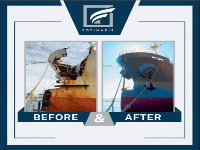Navigating the Leadership Gap in Fleet Operations: Implications for Supply Chain Resilience
As reported by RTA, the absence of a succession plan can lead to immediate chaos when a fleet manager departs.maintenance schedules falter, compliance documents are overlooked, and work orders accumulate. This situation sidelines vehicles, frustrates drivers, and delays deliveries.What begins as a simple vacancy can quickly escalate into meaningful operational challenges.
the impact of leadership changes in fleet management extends beyond just the day-to-day operations. When experienced managers leave, vehicle availability decreases, repair timelines stretch out, and managing costs becomes increasingly complex. While many recognize driver shortages as an issue, the turnover in leadership is often underestimated yet equally disruptive to supply chain efficiency.
The Consequences of Unstable Fleet Leadership
Losing a fleet manager is more then just an HR concern; these leaders play crucial roles in ensuring smooth operations and financial oversight. Frequent shifts at the top create widespread instability within the organization.
- Decision-making disruptions: Fleet management requires long-term planning—think budgets and technology upgrades. Each time a manager exits, ongoing projects stall while new leaders familiarize themselves with existing strategies and seek approval for initiatives that were already underway.
- Compliance challenges: New managers must quickly get up to speed on regulations like DOT filings or safety standards. Missing deadlines can lead to fines or audits that jeopardize overall performance—an experienced hire may know regulations but not where the company currently stands.
- vendor relationship strains: Consistent leadership fosters strong supplier agreements; frequent changes can destabilize these relationships leading to renegotiation issues or inconsistent service quality.
- Driver retention issues: Drivers notice when there’s instability at the top—they may start questioning decisions which leads to sloppy scheduling and increased turnover rates along with higher recruitment expenses.
- Escalating costs: Fleet managers are responsible for budgeting and maintenance expenditures; without steady guidance here, costs can spiral out of control affecting profitability substantially—margins are already tight!
Acknowledging Leadership challenges in fleet Management
the reality is that many new fleet leaders lack proper training for their roles—they often come from technical backgrounds but find themselves thrust into positions requiring skills they haven’t developed yet such as conflict resolution or regulatory knowledge.
Citing experiences from various organizations shows how new managers frequently feel overwhelmed right from day one—expected to manage large budgets while navigating compliance requirements without adequate support systems in place leads them straight toward burnout.
When they struggle? They’re replaced swiftly with another unprepared individual who starts this exhausting cycle anew.
This lack of structured development pathways means many fleet professionals feel isolated between executive demands and operational realities without mentorship opportunities available—a recipe for frustration leading directly back into high turnover rates.
Strategies for Enhancing leadership stability
- treating leadership strategically: Recognizing that technical expertise isn’t enough is vital; fleets should be viewed as integral parts of value chains rather than mere cost centers!
- Pairing mentors: New managers thrive under guidance from seasoned veterans who’ve faced similar hurdles before—a formal mentorship program could help navigate complexities confidently!
- Investing in training: Incorporating management development into standard training ensures future leaders acquire necessary skills through workshops focused on finance & compliance courses tailored specifically towards their needs!
- Pursuing industry engagement: Encouraging participation within associations like TIA & TMC provides networking opportunities alongside valuable resources fostering growth among peers facing similar challenges together!
- Aiming at reducing burnout: Spreading responsibilities across teams helps alleviate pressure allowing individuals room breathe preventing exhaustion while improving retention rates overall! li >
The Bottom Line h3 >
stable leadership enhances supply chain effectiveness overall! Well-trained & supported fleet managers focus on preventive maintenance keeping vehicles operational longer minimizing unexpected expenses along way! They also maintain reliable supplier agreements ensuring consistent access fuel parts services—all contributing positively towards organizational success!
Stronger communication under effective management improves driver satisfaction resulting lower turnover recruitment costs too! Compliance outcomes benefit greatly since well-supported supervisors ensure adherence safety protocols reducing liabilities promoting accountability culture throughout organization itself !
While retaining drivers technicians remains critical overlooking importance solidifying managerial positions proves costly mistake indeed ! Investing time resources developing nurturing talent yields better results across board enhancing performance ultimately benefiting entire operation moving forward together cohesively united vision ahead !
Josh Turley serves as CEO at RTA.
Content Original Link:
" target="_blank">


















































